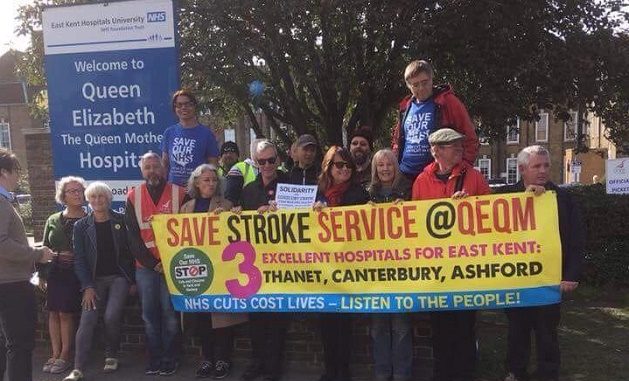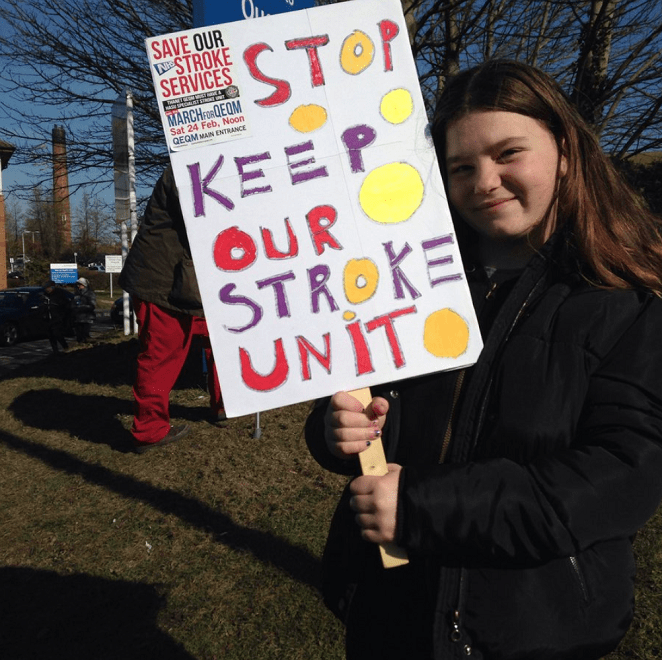
SAVE Our NHS in Kent campaigners are calling for people to protest outside the QEQM Hospital in Margate next Saturday (October 6) in protest at plans to close the stroke service and move it to Ashford.
The demo is in protest against a decision by local NHS bosses to opt for three hyper-acute stroke units in Kent — with the nearest one to Thanet being at William Harvey Hospital in Ashford.
The NHS in Kent and Medway – which includes all 8 Clinical Commissioning Groups – Bexley in south east London and the High Weald area of East Sussex drew up a shortlist of five options and has announced Darent Valley Hospital, Maidstone Hospital and William Harvey Hospital as preferred options for the specialist units.
General stroke services are provided in all the hospitals across Kent and Medway, including the QEQM, but there are currently no specialist hyper acute units. NHS bosses in the region say larger, specialist units in other parts of the country have been shown to improve outcomes for people who have had a stroke.
The decision means current services will likely be removed from some hospitals, including QEQM in Margate.
The NHS says hyper acute stroke units will reduce deaths as each will have a multi-disciplinary team of specialist stroke clinicians, seven days a week caring for patients in the critical first 72 hours.

But a SONIK spokesperson said: “This is an appalling decision. Clinical commissioners are saying that having three stroke units instead of three will be safer than the present arrangements — but this is based on no good evidence. This is a dangerous experiment on the people of Kent which will inevitably lead to the unnecessary loss of life.”
“If this decision is followed through, people in Thanet will have to travel way over the recommended time for stroke sufferers with potentially deadly consequences. And taking away stroke services is likely to be just the beginning of a process of downgrading Margate’s QEQM hospital. NHS commissioners are showing total contempt for the health of the people of Thanet.”
SONIK says there may still be hope to save the stroke unit in Margate.

The spokesperson said: “NHS bosses say the final decision will not be taken until December or January. That means we must and will do all we can to get the powers that be to change their minds. We must protest, protest and protest, This battle is not over yet. We have to fight on until we win.”
Join the Save Our NHS in Kent rally outside the QEQM Hospital on Saturday, October 6 at noon at the Ramsgate Road hospital entrance.

